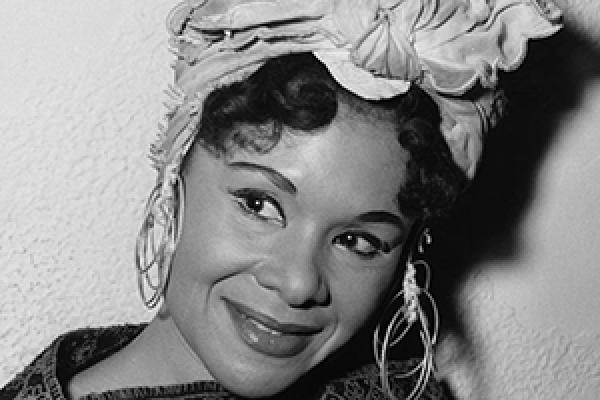Dance research project tracks every day of dancer's 30-year touring career

A "space-time aquarium" that illustrates Katherine Dunham's travels from 1950 to 1953. Her touring advances chronologically by height.
It’s one thing to reference someone’s footprints as hyperbole to illustrate how they impacted the world.
But it’s another thing entirely to actually track somebody’s footprints quantitatively to decipher in meticulous detail how their influence spread across the globe.
That’s what Harmony Bench, associate professor in the Department of Dance, is doing.
Bench is co-principal investigator for “Dunham’s Data: Katherine Dunham and Digital Methods for Dance Historical Inquiry,” a project funded by the Arts and Humanities Research Council and led by Kate Elswit at the University of London’s Royal Central School of Speech and Drama. The three-year endeavor methodically examines the worldwide movements of legendary dancer, choreographer and anthropologist Katherine Dunham, whose 30-year touring career spanned the world and brought African American modern dance onto the global stage. Starting shortly after World War II, Dunham and her dance company toured extensively and visited locales in Europe, the Caribbean, South America, Australia and Africa.
Bench, Elswit, and postdoctoral assistants Takiyah Nur Amin of Davidson College and Antonio Jimenez-Mavillard of the CulturePlex Lab at Western University comb through Dunham’s extensive archives to construct datasets that trace her travel every day. The team goes through correspondence between Dunham and her family, ticket stubs, payrolls, box office reports and receipts to piece together not only where she was, but who the dancers in her company were. The researchers’ ultimate goal is to capture every day of Dunham’s touring journey to understand how her aesthetic influence propagated across the countries she visited and to examine how she sustained a three-decades long touring career.
“This project is trying to look behind the scenes,” Bench said. “We’re focused on Katherine Dunham, but we’re not focused on her as a star or as a celebrity. We’re thinking about her in this kind of nitty-gritty, everyday way. Where is Katherine Dunham? Who’s she with? What is she working on?”
While many studies into Dunham may deal with one facet of her work — either as a dancer, a choreographer or an anthropologist — Bench and Elswit aim to delve deeper. With “Dunham’s Data,” they work to bring all aspects of her career together in a dynamic and comprehensive way.
“This project is trying to have a 360-degree view of this one person,” Bench said. “We’re literally reconstructing on a day-to-day basis where she was, where she was performing, what she and her company members were performing, how many shows they had in a single day, which performers were coming into the company, which performers were leaving. The amount of data that we’re generating is quite phenomenal.”
Dunham, who passed away in 2006 at the age of 96, left behind a thorough record. Bench and Elswit scour data from archives at Southern Illinois University at Carbondale, the Missouri Historical Society, the Library of Congress and the New York Public Library.
“It’s really important for us that Dunham’s own voice is very much a part of what the project is,” Bench said. “We’re concerned that we don’t reduced her lived experience to data points. We want to do this work in a way that we’re collecting this data in order to open up more spaces for narrative, more spaces for interpretation.”
